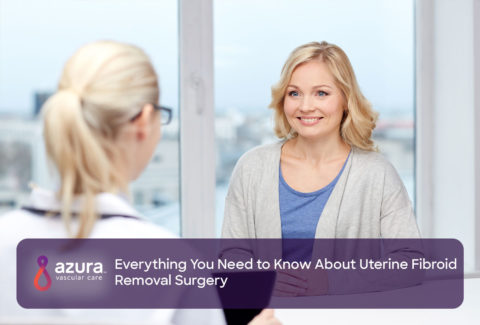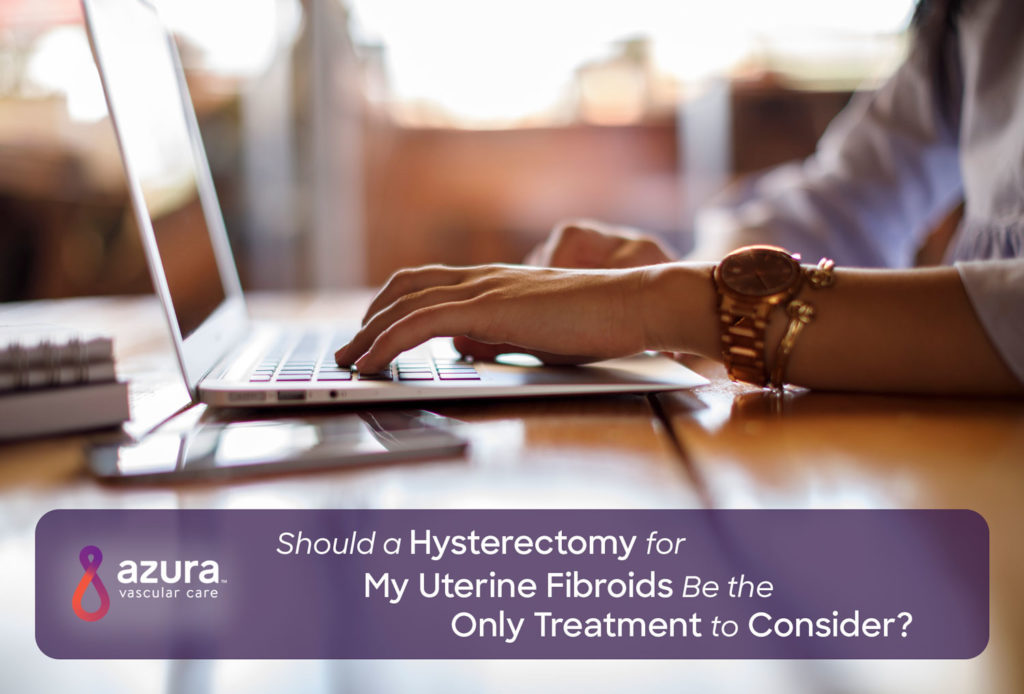
If you have uterine fibroids, you may be unsure of your treatment options. In the past, many doctors recommended a hysterectomy for fibroids, but a hysterectomy is no longer the only available treatment. Although a hysterectomy may be necessary for some patients, others can treat their fibroids using less invasive methods. Read on to learn more about various treatment options for uterine fibroids.
Types of Uterine Fibroids
Uterine fibroids are noncancerous growths that are classified according to where they grow: (i) There are four types of uterine fibroids.
- Submucosal fibroids grow inside the uterine cavity.
- Intramural fibroids develop in the walls of the uterus. These fibroids often bulge inward, occupying some of the space inside your womb. (i)
- Subserosal fibroids grow outside the uterus.
- Pedunculated fibroids are attached to the uterus via a stalk. They may look a little like mushrooms. (i)
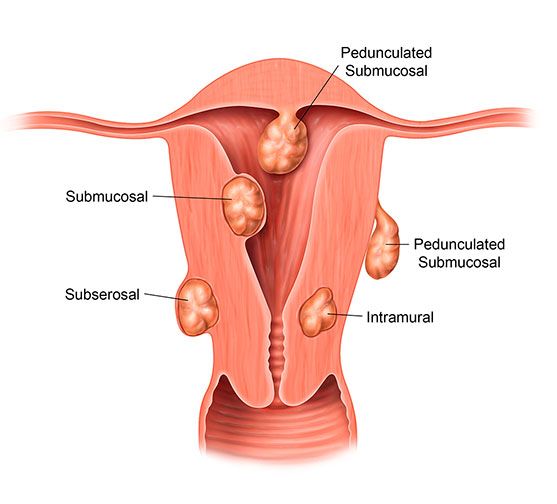
Treatment options vary depending on the size and location of your fibroids. Larger fibroids can be more challenging to treat and may require more invasive treatment methods. (ii)
Do I Need Treatment for My Fibroids?
The size and severity of uterine fibroids can vary. Some are very small or even invisible to the naked eye and may not cause any symptoms. Others are large enough to cause pain, bleeding, or other troublesome symptoms. (iii) If your fibroids aren’t causing any symptoms or health problems, treatment may be unnecessary. (i)
In some cases, fibroids can affect your fertility or cause pregnancy-related complications. (iii) If your fibroids are painful or interfering with your daily activities, you should seek medical evaluation.
If I Need Treatment, Is a Hysterectomy My Only Option?
Many women with fibroids would rather not undergo a hysterectomy. After all, a hysterectomy is an invasive fibroid removal surgery with a lengthy recovery time. Having the uterus removed can also be traumatic, particularly for women who were hoping to have children in the future.
Fortunately, a hysterectomy is no longer your only option. (iv) In fact, most doctors now prefer to explore all other treatment options before resorting to a hysterectomy for fibroids. A variety of treatments can help preserve the health and function of your uterus.
Alternatives to Hysterectomy for Fibroids
Uterine fibroid treatment options can vary depending on your age, overall health, and whether you have troublesome symptoms or you’re planning any future pregnancies. In most cases, though, fibroids can be treated with medication or surgery. (iv)
Medications
Prescription drugs are often used to treat small fibroids. Hormonal medications can help control unwanted symptoms like heavy bleeding or cramping. (ii) Medications called gonadotropin-releasing hormone agonists (GnRHa) can be particularly helpful in treating fibroids. (ii)
GnRHa drugs work to shrink fibroids over time. But these drugs can be expensive and may cause side effects. They are only a temporary solution: they work while you’re taking them. If you stop your medication, your fibroids may return. (ii)
Like all treatment options, medications have their advantages and disadvantages. Your obstetrician-gynecologist (OBGYN) can help you determine if medication is the best treatment option for your fibroids.
Other treatment options
If medication isn’t an option, procedures to shrink or remove fibroids are available.
A myomectomy is the surgical removal of uterine fibroids. Some myomectomies are performed laparoscopically so there’s no large incision, but general anesthesia is required. If your fibroids are large or deeply embedded in the uterine tissue, more invasive surgery may be necessary. Recovery time can vary depending on the extent of the procedure. (i)
Most patients can still become pregnant after a myomectomy, but some women who undergo a myomectomy may be at a higher risk for pregnancy-related complications. (i) Your OBGYN can help you weigh the risks to decide if this type of surgery will meet your needs.
Endometrial ablation is another option. This procedure is often used to treat heavy bleeding caused by fibroids or other gynecological problems. An endometrial ablation permanently removes or destroys the uterine lining. It’s considered minor surgery and is often performed on an outpatient basis. (i)
The procedure is associated with few risks, and most women recover quickly. However, women who undergo an endometrial ablation cannot become pregnant in the future. (i) If you aren’t planning to have more children, this procedure may be an option for you. If you want to preserve your fertility, you may need to consider another treatment.
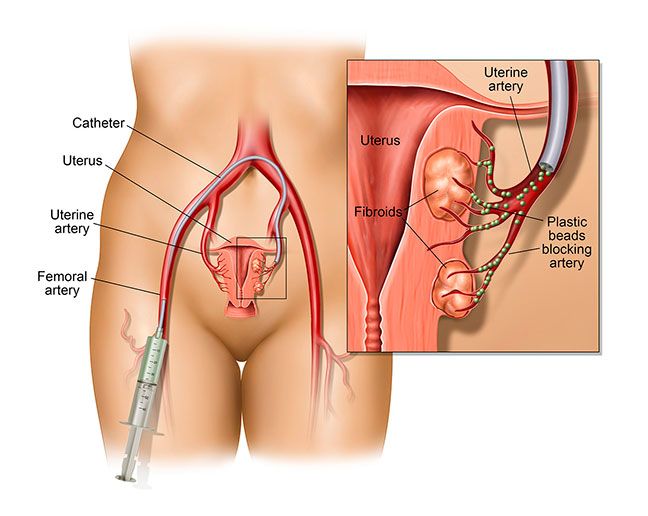 Uterine fibroid embolization (UFE) is an excellent option for many women. Unlike an endometrial ablation, it doesn’t prohibit future pregnancies. Unlike a myomectomy or hysterectomy, UFE is a minimally invasive, uterine saving, nonsurgical procedure. (v)
Uterine fibroid embolization (UFE) is an excellent option for many women. Unlike an endometrial ablation, it doesn’t prohibit future pregnancies. Unlike a myomectomy or hysterectomy, UFE is a minimally invasive, uterine saving, nonsurgical procedure. (v)
During a UFE, an interventional radiologist threads a catheter through a vein in your leg into the arteries that supply blood to the fibroids. The radiologist injects tiny plastic particles through the catheter into those arteries. These particles block blood flow, causing the fibroid to shrink and die. (v)
UFE is often performed on an outpatient basis. It produces little to no scarring and the risk is for complications. UFE recovery time is short, so it’s a good choice for patients who want to avoid an inpatient procedure at a hospital and a lengthy recovery.
Inpatient vs. Outpatient Care
There’s no doubt that hysterectomy is major surgery. It often requires an overnight stay at the hospital. Hysterectomies also have a higher risk of post-surgical complications, like post-operative infections. (i)
Luckily, a hysterectomy for fibroids isn’t your only option. Outpatient procedures like UFE can provide symptomatic relief without invasive surgery. At Azura Vascular Care, highly trained vascular specialists, registered nurses and medical professionals work together to provide coordinated, focused, best-in-class care in a safe, comfortable setting—adhering to the same rigorous standards and benchmarks as a hospital setting.
Ready to learn more about your treatment options? Download our free information sheet, Understanding Uterine Fibroid Embolization (UFE), or call 844-UFE-CARE (833-2273) today to schedule an appointment with a vascular specialist.
Sources:
(i) U.S. Department of Health & Human Services: Office on Women’s Health. (2018, March 16). Uterine fibroids. Retrieved December 7, 2018, from https://www.womenshealth.gov/a-z-topics/uterine-fibroids.
(ii) Mayo Clinic. (2018, March 6). Uterine fibroids: Diagnosis & treatment. Retrieved December 7, 2018, from https://www.mayoclinic.org/diseases-conditions/uterine-fibroids/diagnosis-treatment/drc-20354294.
(iii) Mayo Clinic. (2018, March 6). Uterine fibroids: Symptoms & causes. Retrieved December 7, 2018, from https://www.mayoclinic.org/diseases-conditions/uterine-fibroids/symptoms-causes/syc-20354288.
(iv) U.S. Department of Health & Human Services: Office of Science Policy Analysis. (2018, June 30). Uterine fibroids. Retrieved December 7, 2018, https://report.nih.gov/nihfactsheets/viewfactsheet.aspx?csid=50.
(v) Mayo Clinic. (2018, March 21). Uterine artery embolization. Retrieved December 7, 2018, from https://www.mayoclinic.org/tests-procedures/uterine-artery-embolization/about/pac-20384713.
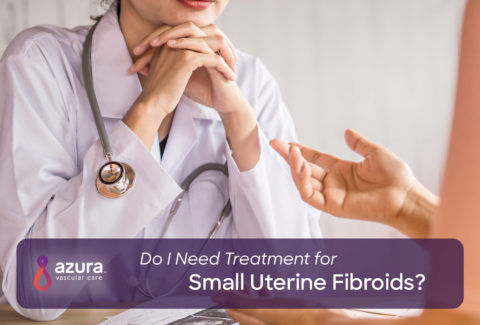
![She Said “NO” to a Hysterectomy [Patient Story]](https://www.azuravascularcare.com/assets/She-Said-no-to-a-Hysterectomy-480x325.jpg)
